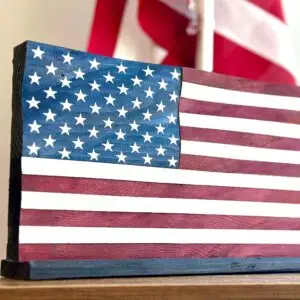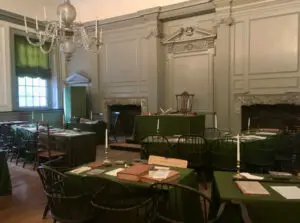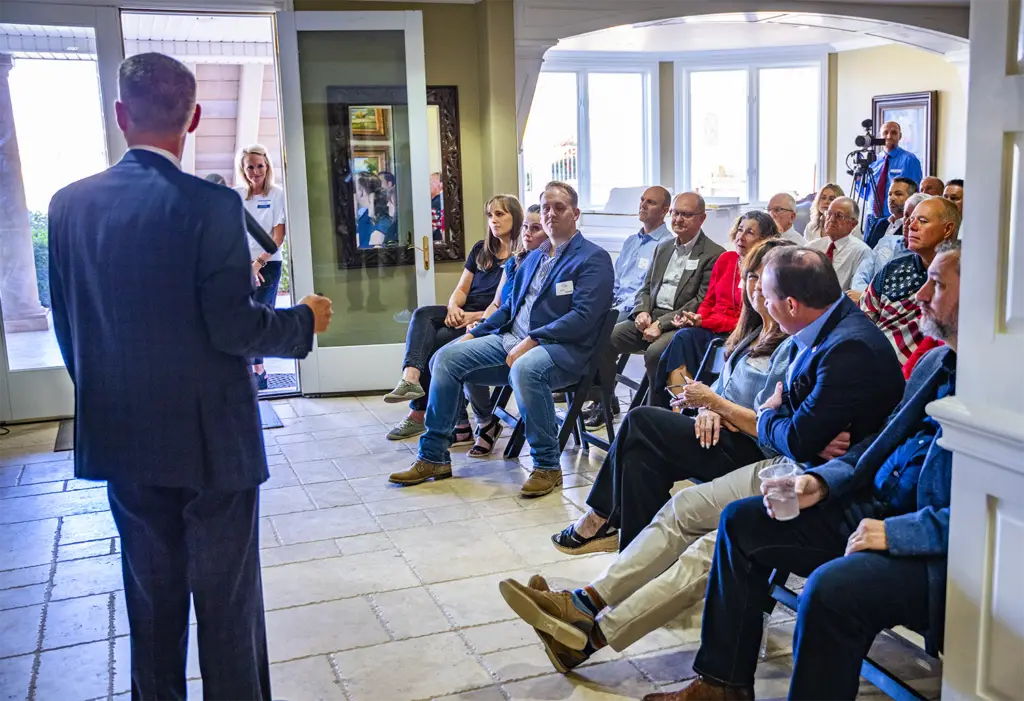
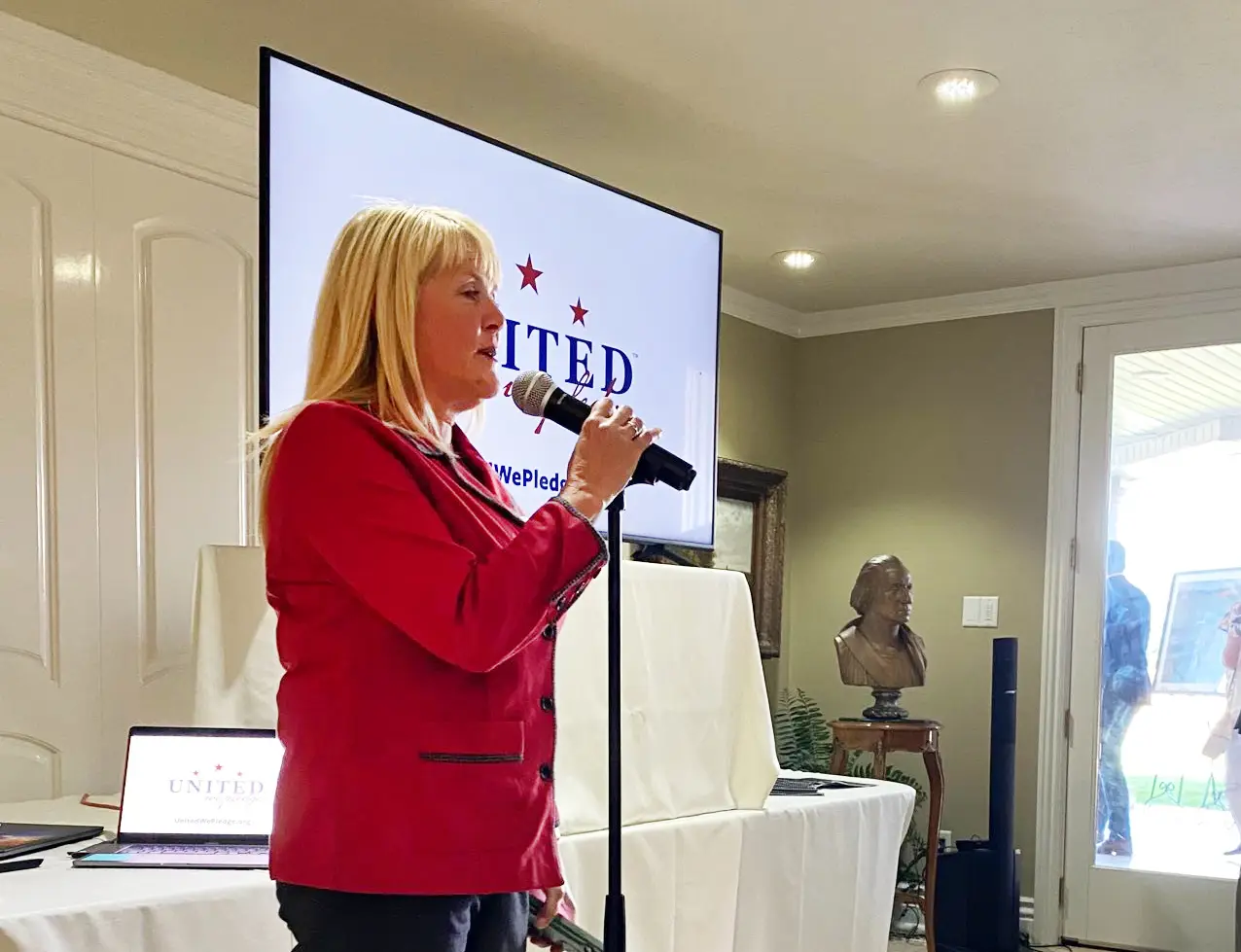
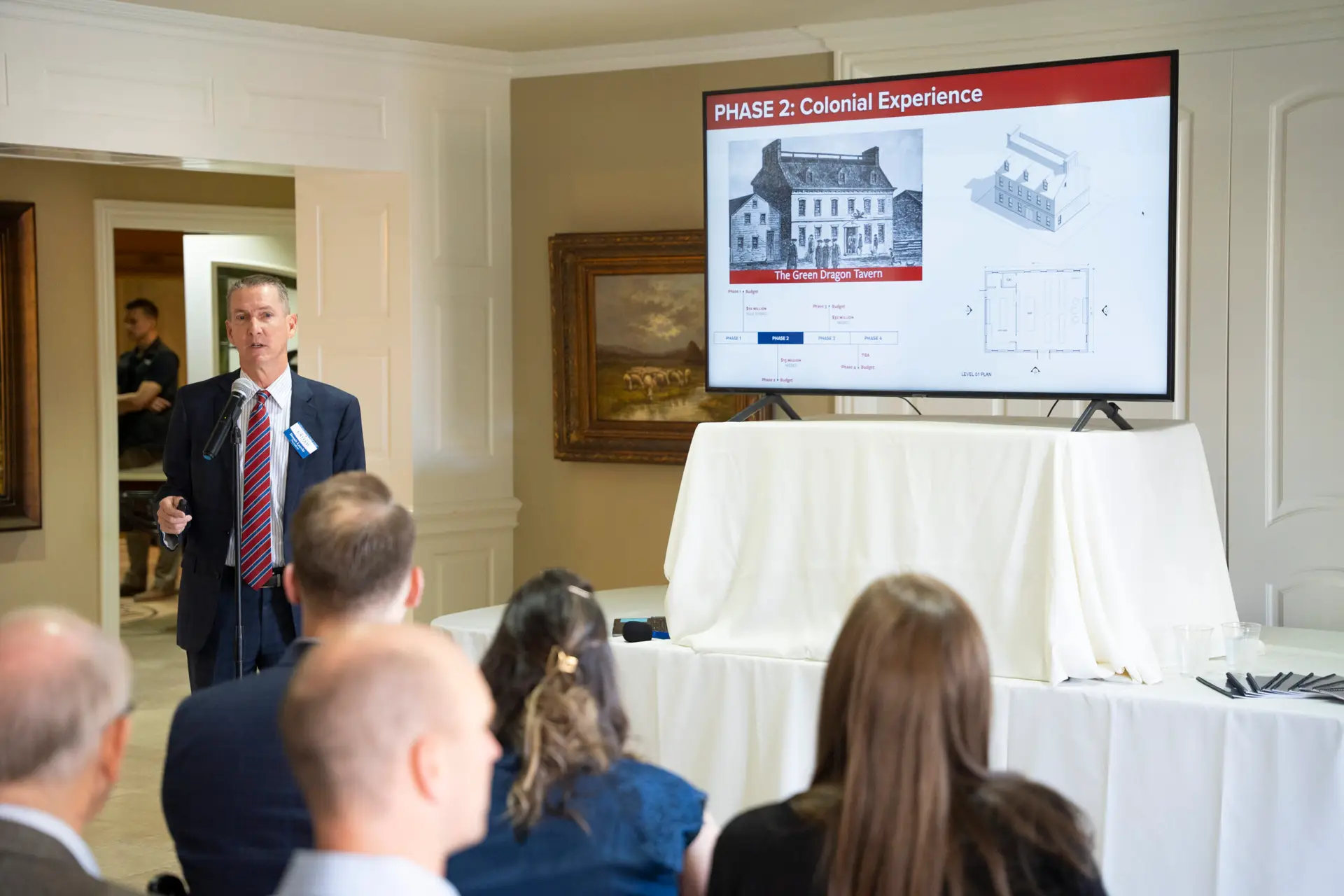
United We Pledge held a Liberty Village reception on October 7, 2022, in St. George, Utah, to share the progress made on their Liberty Village project.
Attendees included many community leaders and members. United We Pledge was pleased to receive support from Utah Senator Mike Lee for the Liberty Village project. Senator Lee shared his excitement for Liberty Village. He acknowledged how it will be a great educational tool to instill in the hearts of visitors a knowledge and appreciation for the founding documents of the United States, including the Constitution, Bill of Rights, and Declaration of Independence. Support from local and Utah state government leadership, such as Senator Lee, is a key step in gaining the funding and awareness needed to complete this monumental project.
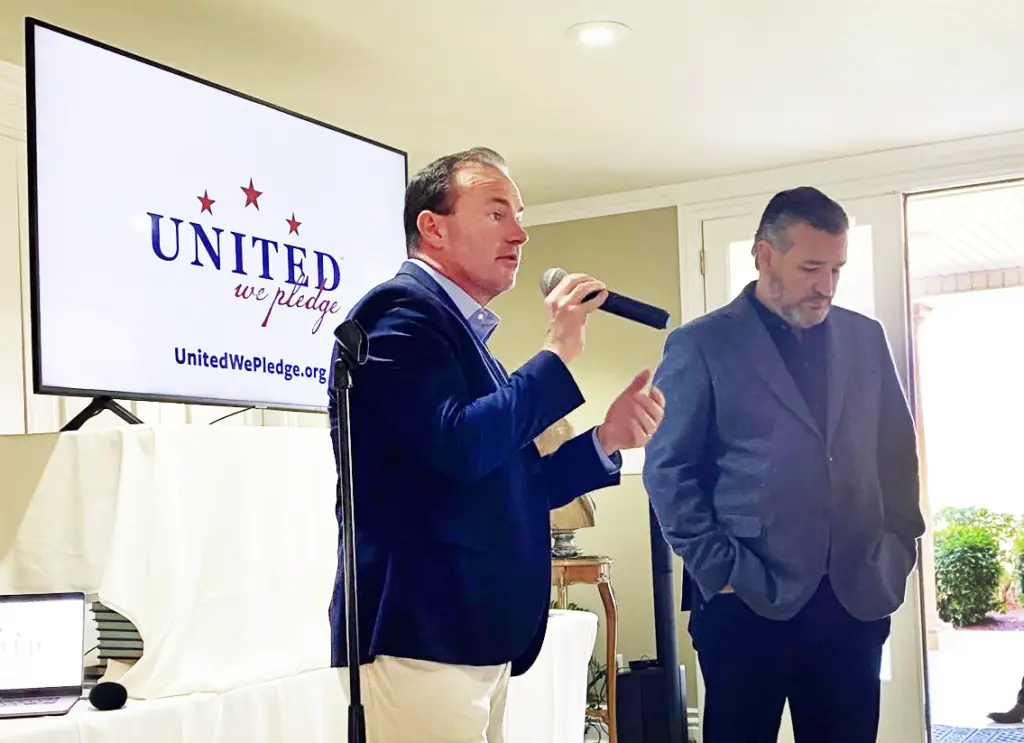
The Purpose Behind Liberty Village
United We Pledge has carefully curated the ideal purpose for this project: to educate and inspire youth and all visitors with a renewed sense of respect for our nation’s founding documents and a clear understanding of our rich American heritage.
As a nonpartisan organization, United We Pledge has a goal to educate through unbiased educational materials. This approach is aimed at providing education that can unify all Americans.
As an organization, we choose to not hide from our rich American heritage, but to embrace it and learn from the good and the bad. Although our nation’s leaders and history are not perfect, we recognize that the United States has become the greatest nation on earth because of the principles upon which it was founded. Among these are the emphasis on freedom, family, and faith rooted in a melting pot of diversity and cultures that have united to obtain the “American dream.”
United We Pledge’s goal is to have the ribbon cutting for Liberty Village on July 4, 2026. This is America’s 250th birthday. We chose this date as a goal because we felt that there is no better way to celebrate America’s 250th birthday than to provide a premiere educational experience for youth and families to learn about and celebrate this great nation’s history.
Gateway to National Parks
Liberty Village will be a family destination for the entire West Coast and beyond. Located in Hurricane, Utah, just 28 minutes from Zion National Park, it will be positioned in the heart of the “gateway to national parks.” This will provide ample opportunity for visitors from all over the world to visit Liberty Village along their way to Zion National Park and other nearby attractions.
The Liberty Village experience will be a unique and interactive educational tool featuring a combination of technological and traditional teaching tools. The campus will have 13 key historic buildings built over the course of the next 4 years. Independence Hall, George Washington’s Mount Vernon, and St. John’s Church will be among the main buildings featured on the campus.
Liberty Village will be built in 4 key phases. Our goal is to have Liberty Village open to the public by the completion of Phase 2 in 2024.
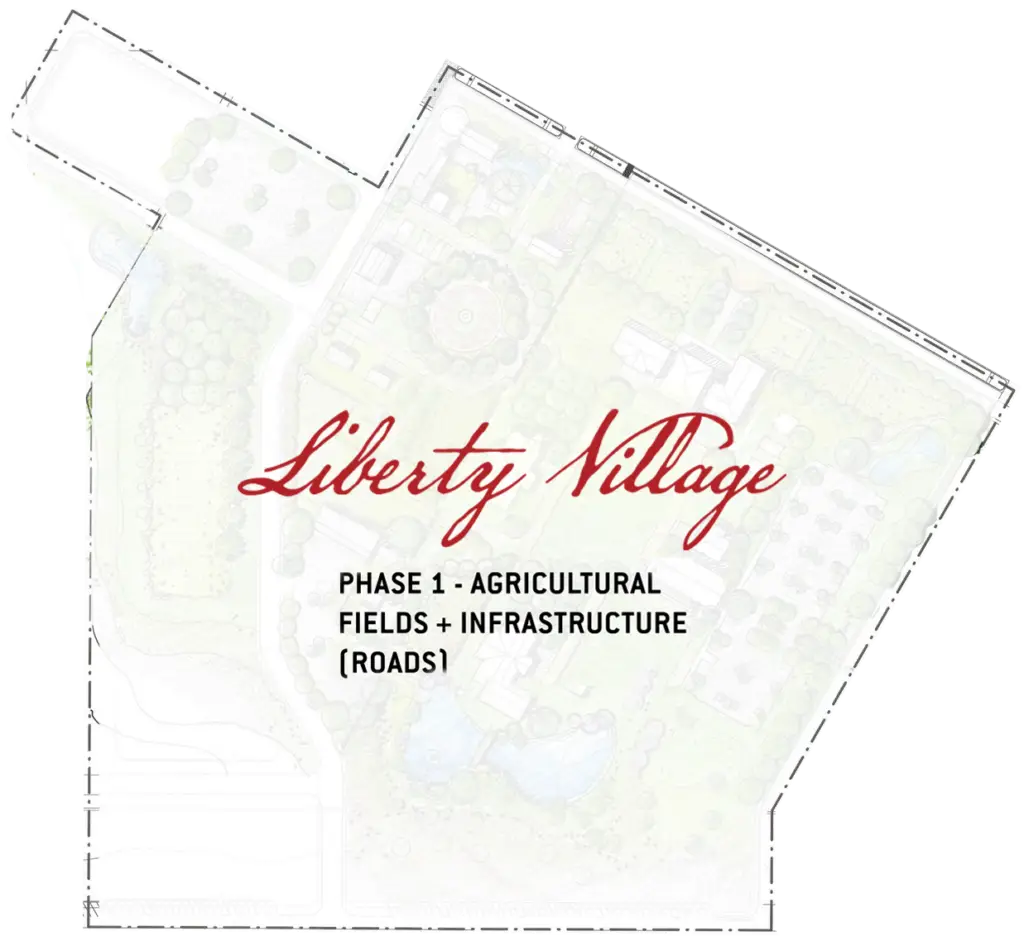
Phase 1 of Construction
Phase 1 of Liberty Village is already under way and fully funded, thanks to United We Pledge’s donors. We thank the Color Country Chapter of the DAR, St. George Chapter of the SAR, Balance of Nature, and other generous private donors who have helped United We Pledge fully fund Phase 1 of Liberty Village.
Phase 1 includes implementation of infrastructure and site work. This includes completing the master site plan, installing a 1,800 gpm water well, hiring a groundskeeper, and using Bramall Farms to begin farming the land. Balance of Nature has generously donated 31.977 acres of land to serve as the campus grounds for Liberty Village.
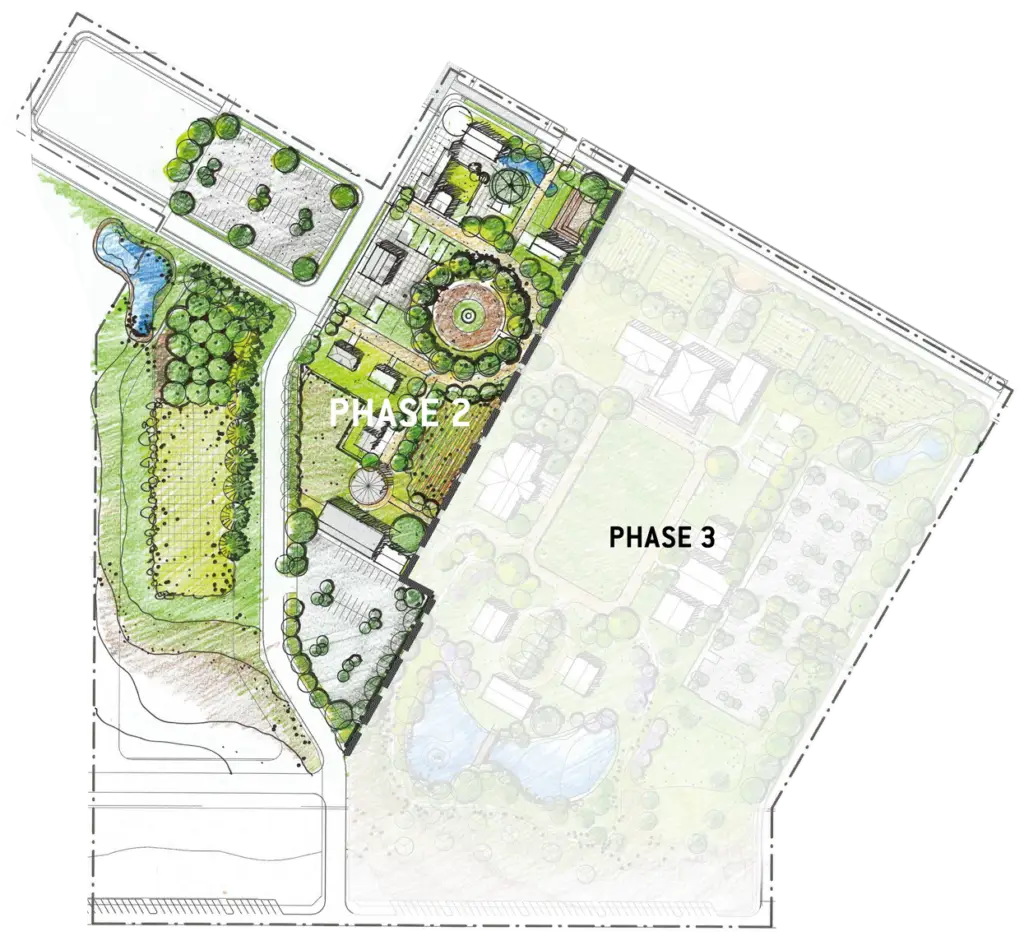
Phase 2 of Construction
Phase 2 of Liberty Village is expected to begin construction in the latter part of 2023 and have several structures completed by July of 2024. This phase is focused on establishing the residences, trade buildings, and town center facilities that were common in colonial America. Each structure will be a replica of a building where key events took place in America’s history.
The main buildings that will be constructed during Phase 2 are: George Washington’s 16 sided barn, the Green Dragon Tavern, a blacksmith shop, Thones Kunders’ House, Elizabeth Powel house, print shop, a one-room schoolhouse, service barn, and the Liberty Tree.
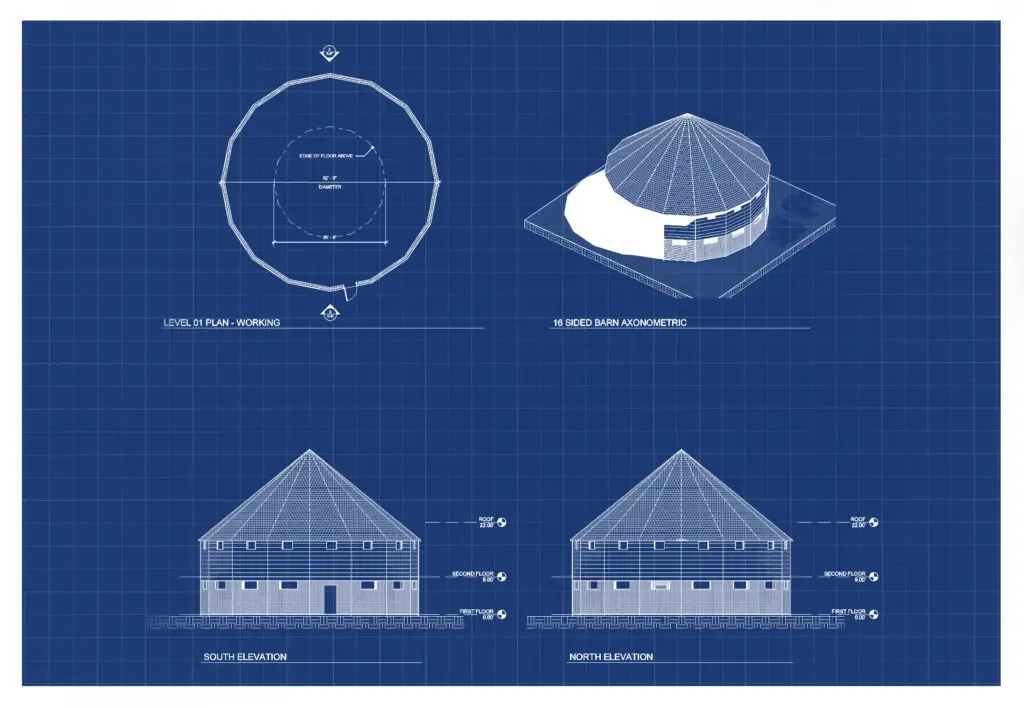
George Washington’s 16 Sided Barn – The barn was built as a means of keeping grain dry (storage) in combination with a method for removing it from its stalk. The wheat was placed on the upper level of the barn where horses would walk in circles trampling the material, causing the grain to separate and fall through gaps in the floor down into the lower level. The barn was 52 feet in diameter, according to Washington’s notes, and featured a conical gabled roof. The original barn was placed near a small constructed hill so the horses could be led up to the second level.
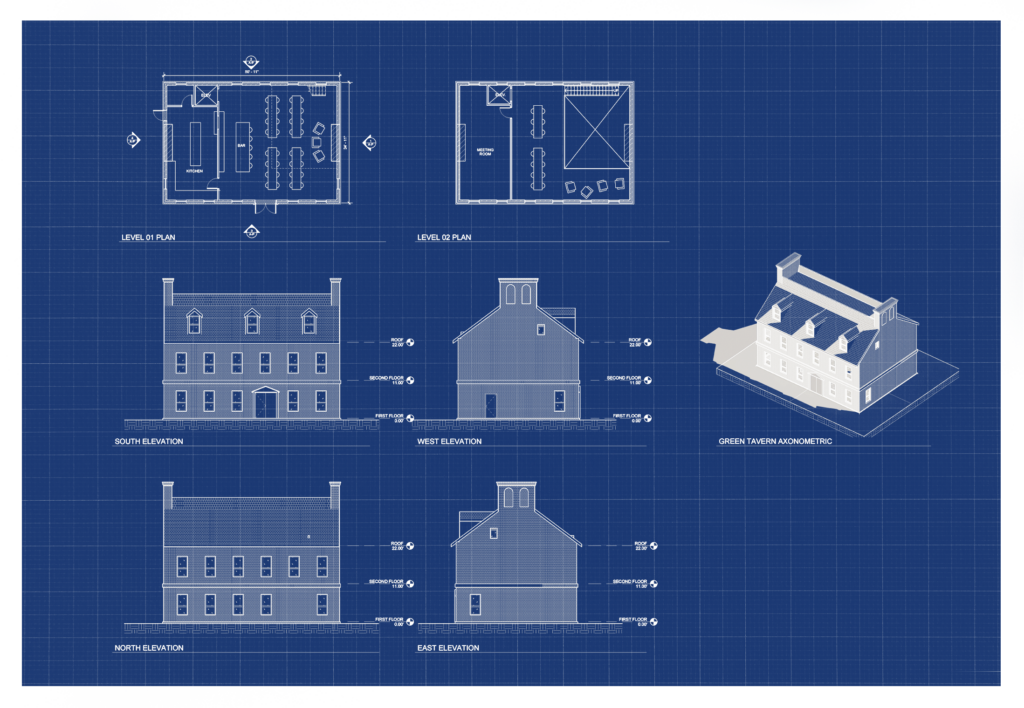
Green Dragon Tavern – This public house was located on Union Street, then known as Green Dragon Lane, in Boston’s North End. A popular meeting place for both the Freemasons and the Sons of Liberty, it was demolished in 1832.
The Green Dragon Tavern has a long and rich history, playing an important part in the freedom of Boston during the War of Independence. Established in 1654, the Green Dragon was a favorite haunt of Paul Revere, who was considered a close neighbor, and John Hancock, whose brother lived next door. The Tavern was adorned with an aged copper dragon, which was said to be at least as old as the building itself.
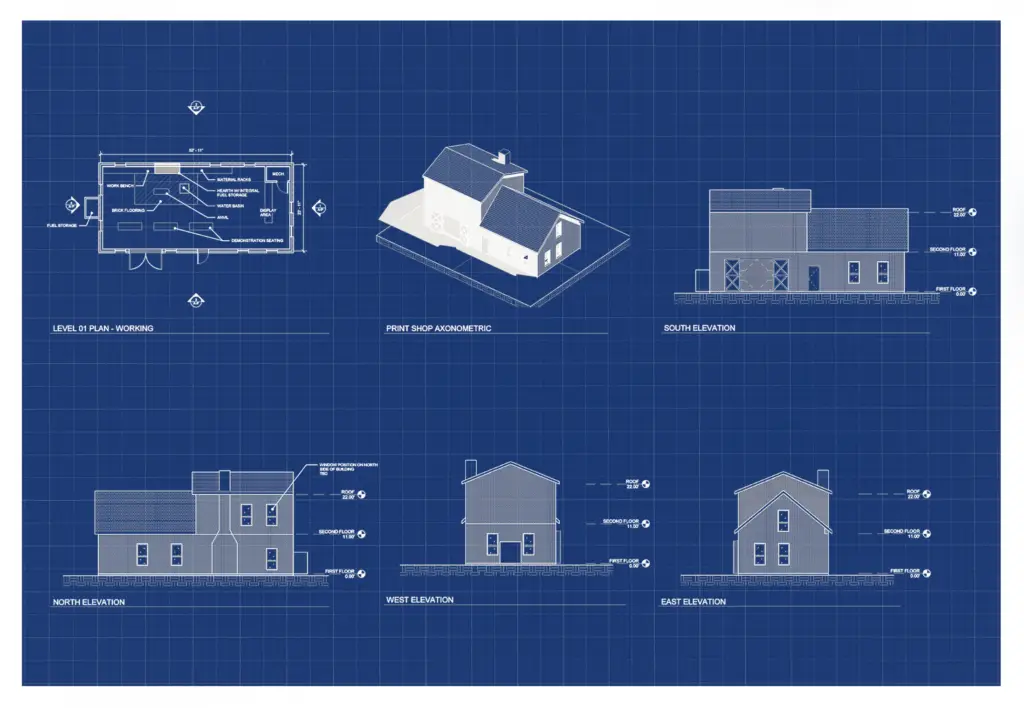
Blacksmith Shop – The shop is based on the Marshallton Village Blacksmith Shop built in the 1700s. It retains its historical integrity and is the most accurate representation of its kind in the county. The space features a hearth, bellows, anvil, and water receptacle for blacksmithing various metal products. Demonstrations of ‘smithing’ will occur for small groups as part of an educational program that explains the role of the blacksmith in colonial American towns and villages.
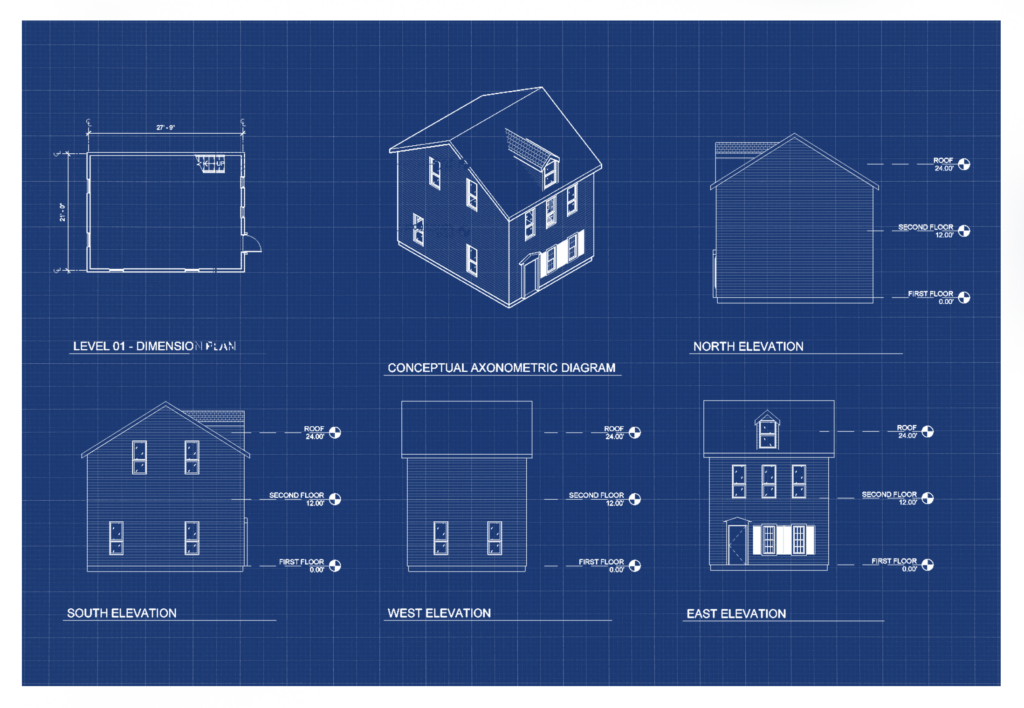
Thones Kunders’ House – One of the original settlers of Germantown. Kunders was a dyer by trade and lived until 1729. The Germantown Society of Friends held their first meetings in Kunders’ house. At the time, some Quaker families in Germantown decided to practice slavery. This concerned several members of the Society as even before the 17th century slavery was considered, at least by some, morally wrong. On February 18, 1688, the first protest against slavery in the new world was drafted in Kunders’ house.
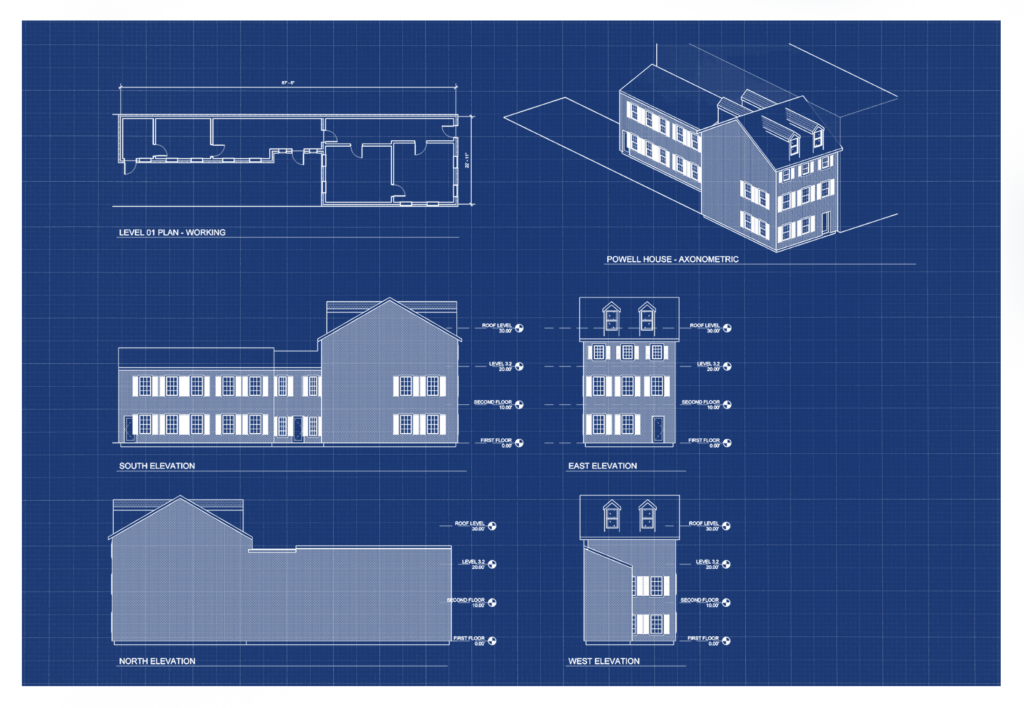
Elizabeth Powel House – Elizabeth Willing Powel didn’t just entertain the political elite with lavish meals; she had a strong voice and became one of Washington’s closest confidants during his presidency, advising him on issues both personal and political. One of the finest examples of Georgian architecture in the United States, the Powel house was built in 1765 by merchant and businessman Charles Stedman. Later restored and opened as a museum dedicated to Colonial Revivalism, it played an integral role in the redevelopment of Society Hill into one of the nation’s premier heritage neighborhoods just blocks from Independence Hall.
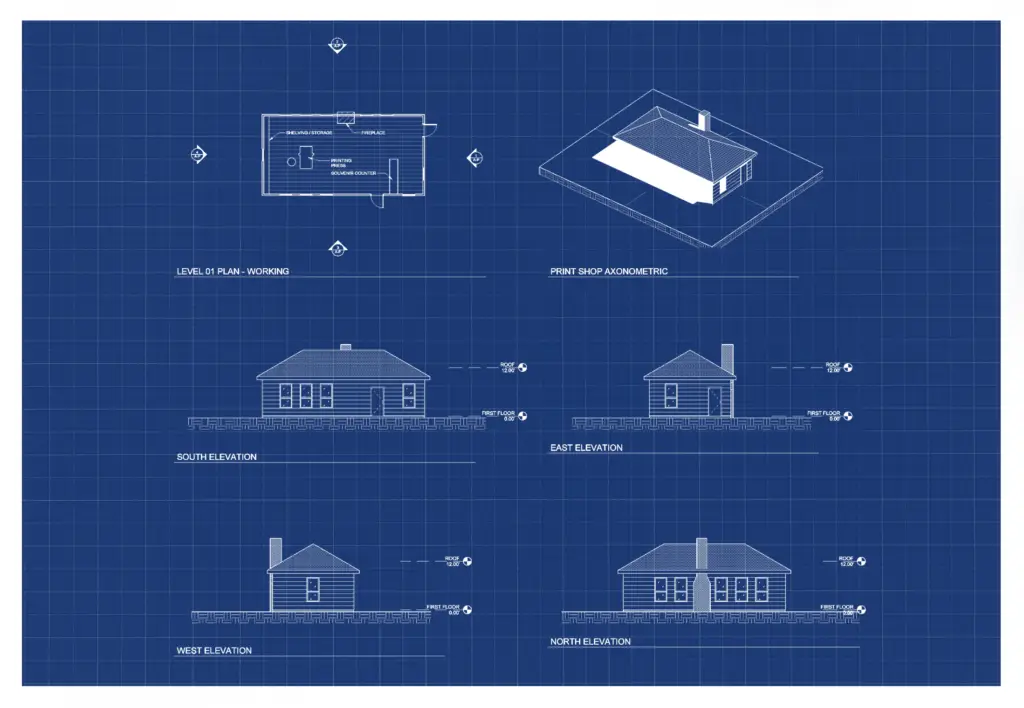
Print Shop – Isaiah Thomas was a Boston printer in the 1770s. From 1770 to 1802, he printed a newspaper called the Massachusetts Spy, which continued to be published until 1904. The content of the Massachusetts Spy was heavily political and included many anonymous essays that kept revolutionary ideas on the front page but stopped just short of calling for open rebellion.
The publication was often found offensive by the colony’s royalist government. In 1771, Massachusetts governor Thomas Hutchison ordered the Attorney General to prosecute Isaiah Thomas for libel. However, the grand jury refused to indict the 22-year old printer. After Lexington, Thomas joined his press and established a print shop in Worcester, Massachusetts. A short time later, his print office in Boston was destroyed by the British military.
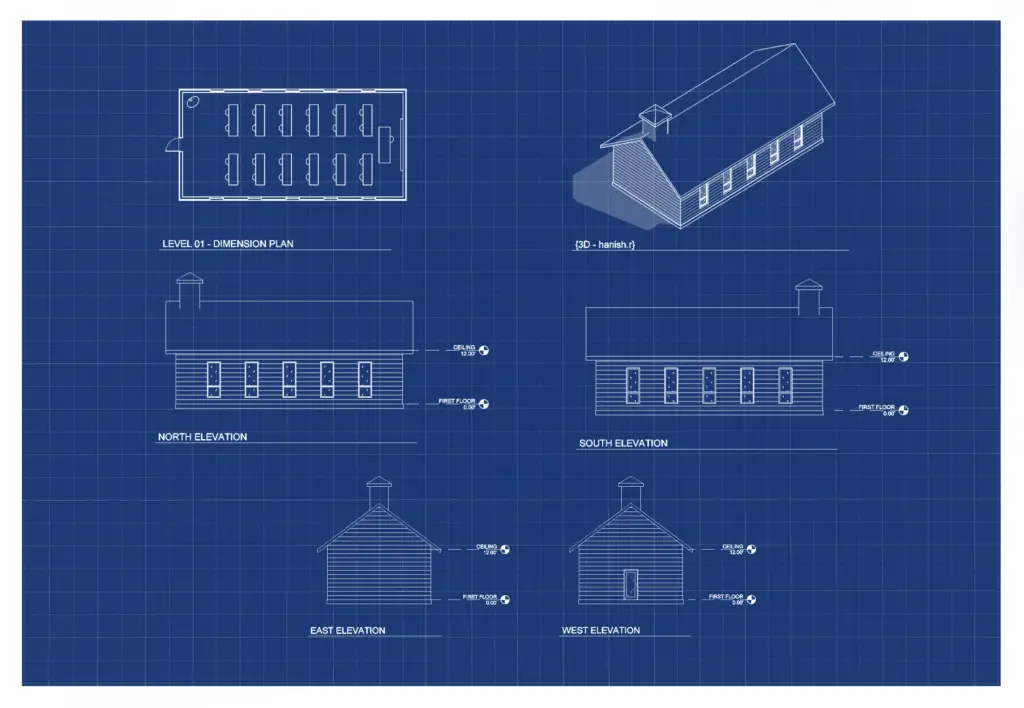
One-Room Schoolhouse – One-room schools were commonplace throughout rural colonial America. Many schools also served as the local chapel on Sundays and as evening/Saturday meeting places for local people and activities. Most buildings were of simple frame construction, some with the school bell on a cupola.
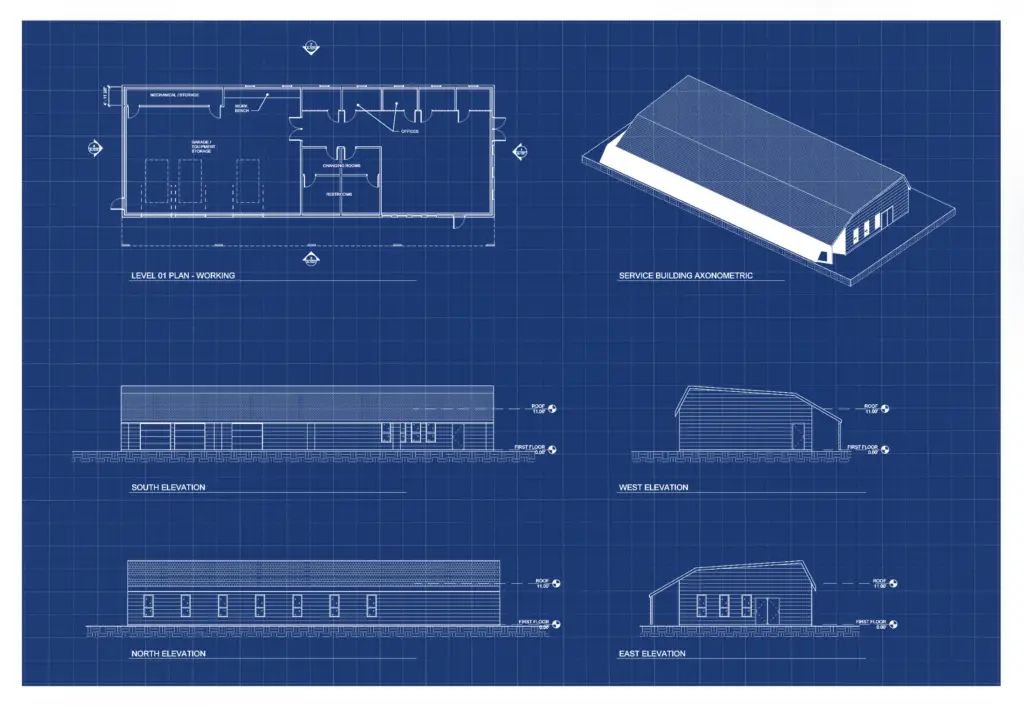
Service Barn – The service barn will be a designated space for utilities and equipment storage for Liberty Village.
Liberty Tree – The Liberty Tree served as a gathering place on the Boston Commons to oppose British rule in the time leading up to the American Revolution. On August 14, 1765, a group of discontented Bostonians hung an effigy in the tree to protest the Stamp Act, attracting hundreds of Boston citizens to see the spectacle. Complaints were posted on the tree’s trunk, and the tree became an inspiration to other communities to establish their own Liberty Tree. The Liberty Tree became a symbol of objection to British policies.
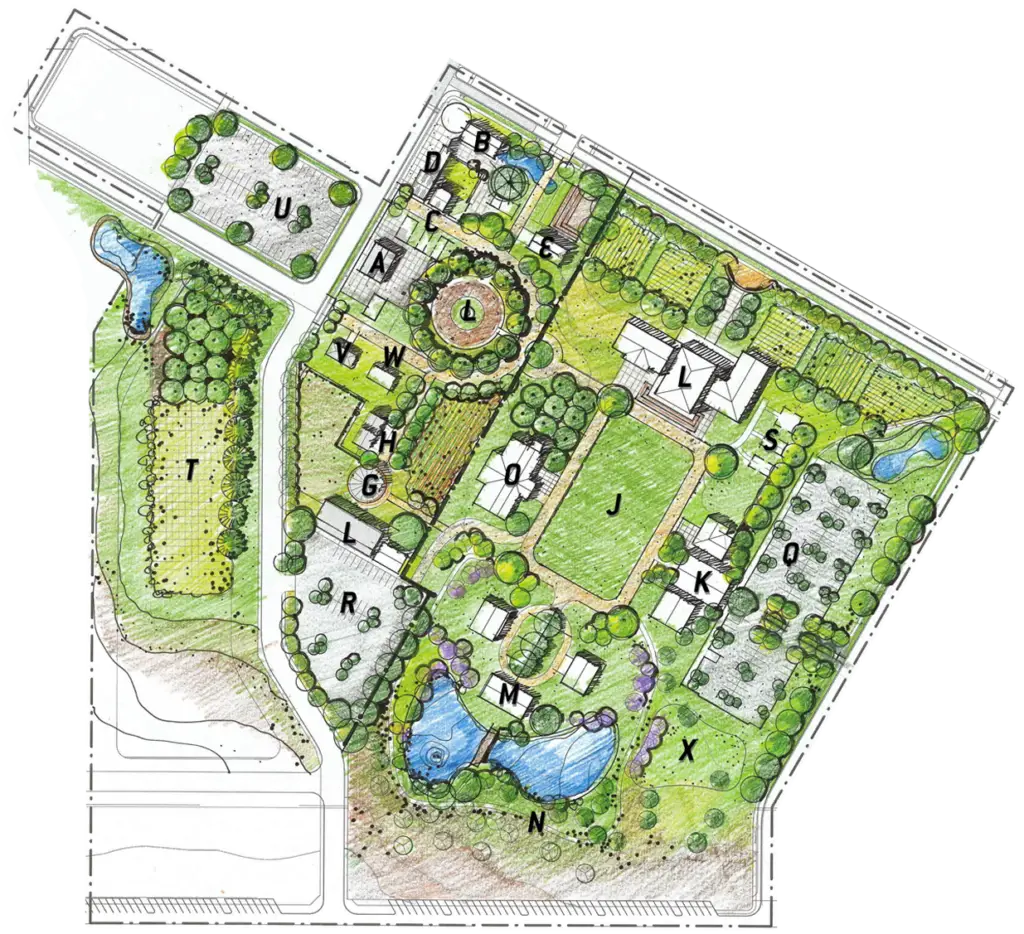
Phase 3 of Construction
Phase 3 of Liberty Village is projected to open to the public on July 4, 2026, the 250th anniversary of America’s independence. This phase focuses on building replica structures of significant buildings in America’s history that will represent freedom, family, and faith. These will be designated in such a way that they can be used for historical tours, educational instruction, civic and patriotic gatherings, social events, and a hub for reflection and study.
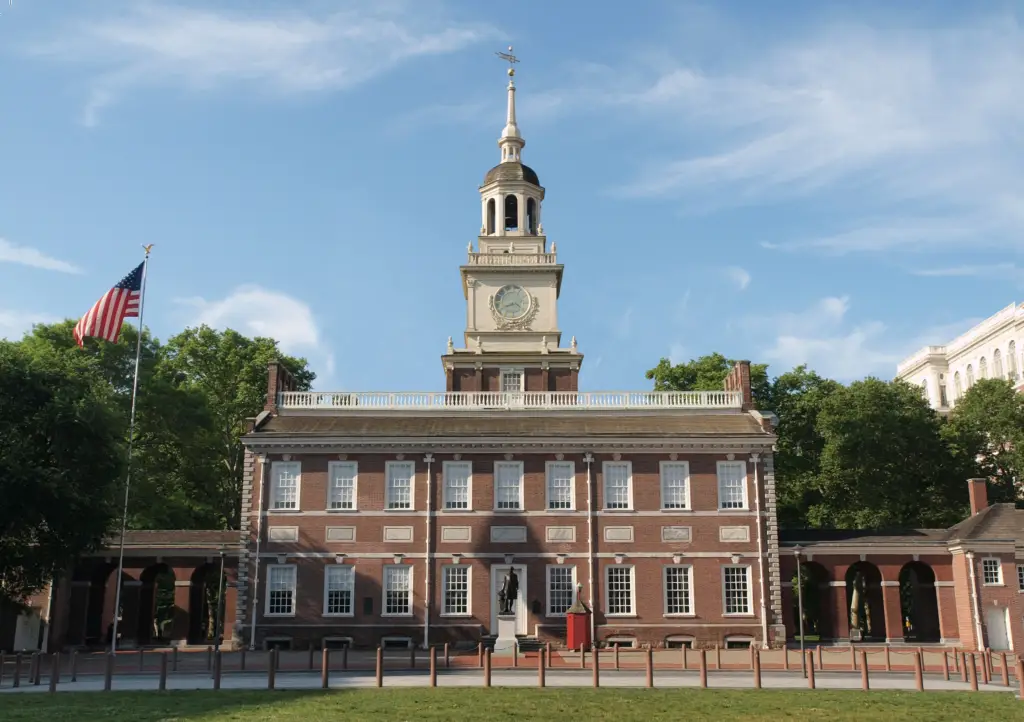
Freedom: Independence Hall – In 1776, the Second Continental Congress signed the Declaration of Independence at Independence Hall. Eleven years later, in the same room, delegates to the Constitutional Convention created and signed an enduring framework of government: the Constitution of the United States. Although known today as Independence Hall, the building was constructed to be the Pennsylvania State House. It once housed all three branches of Pennsylvania’s colonial government.
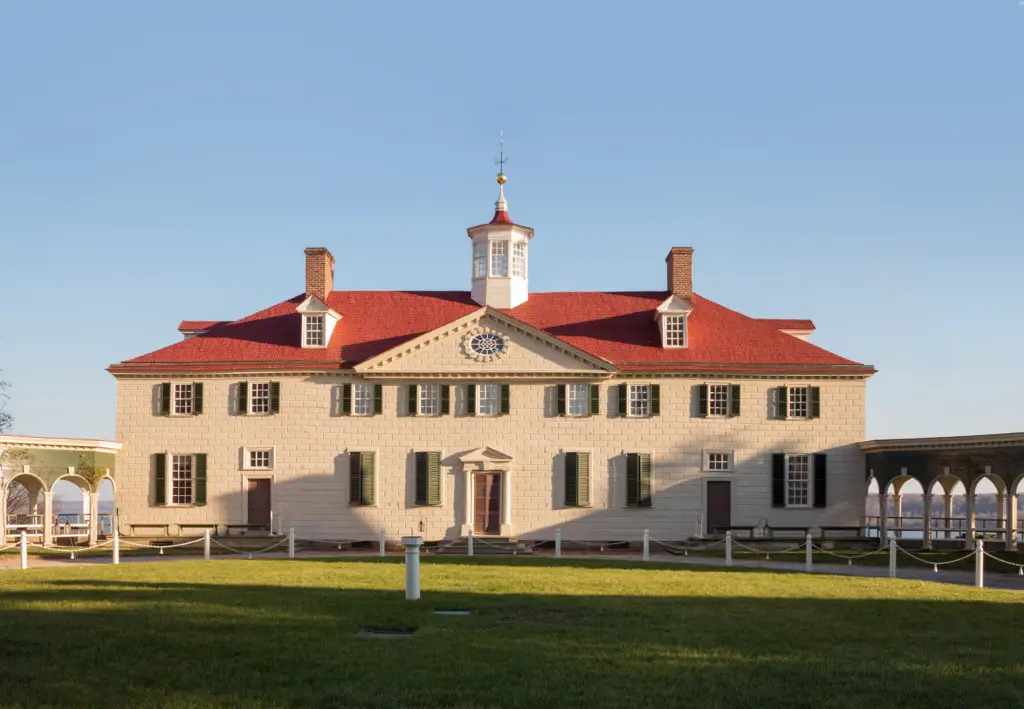
Family: George Washington’s Mount Vernon – One of the most iconic 18th-century homes in America, Mount Vernon was the primary residence of George Washington. The building began as a one-and-a-half story house built in 1734 by George Washington’s father, Augustine Washington, and received its well-known name from his half-brother Lawrence Washington. George Washington began running Mount Vernon in 1754, and over the next 45 years slowly enlarged the dwelling to create the 21-room residence we see today.
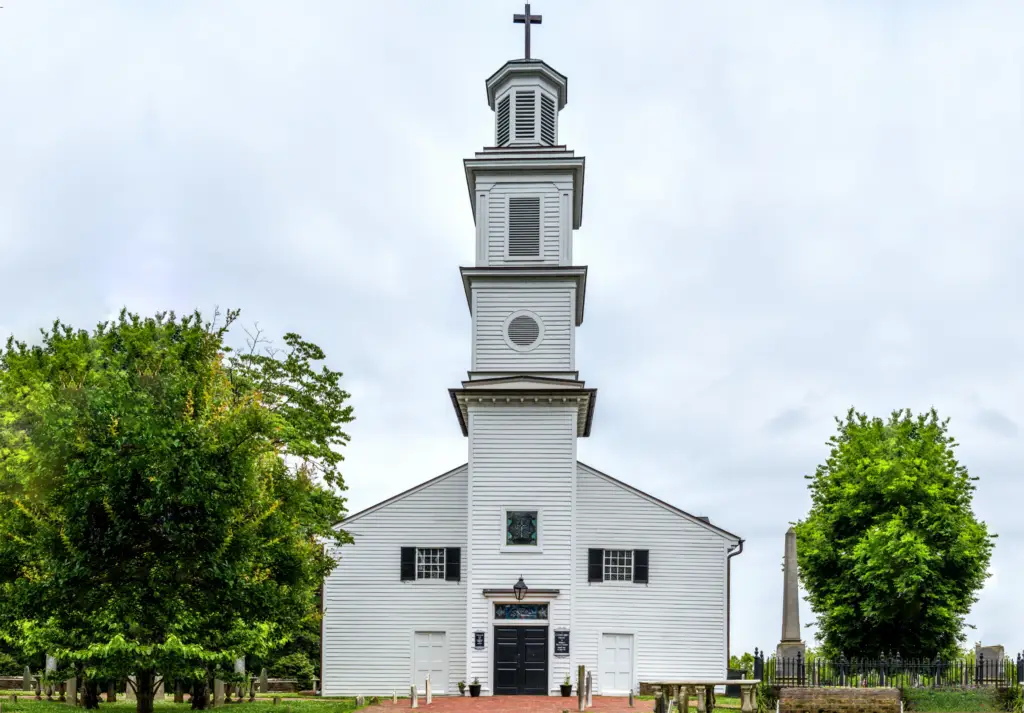
Faith: St. John’s Church – This is the oldest church in Richmond, Virginia. It was built in 1741 by William Randolph’s son, Colonel Richard Randolph. It was the site of two important conventions in the period leading to the American Revolutionary War. The church is known for the place where American Founding Father Patrick Henry gave his memorable speech at the Second Virginia Convention, closing with the often-quoted demand, “Give me liberty, or give me death!” The church is designated as a National Historic Landmark.
Phase 4 of Construction
Phase 4 will begin construction sometime after July 2026. Because we anticipate large crowds of visitors, we will add additional colonial-style housing that can be rented or leased for short-term stays. We will also add monuments, museums, replica homesites, and other 18th-century style amenities to the master planned community of Balance of Nature Gardens and the Liberty Village campus.
United We Pledge has created several donor programs to help fund the many funding needs for Liberty Village. You can contribute to this cause here through membership dues in the United We Pledge membership program.
United We Pledge created a premiere donor recognition program “Liberty Guild” to provide a donor program for large donations and estate gifting. Freedom-loving individuals, families, or companies who give exceptional contributions within our Sponsor, Benefactor, and Patron levels of giving are recognized as our most prestigious donors through the Liberty Guild program. Friends of Liberty Village can meet with the United We Pledge Legacy of Giving Team to review their donation option of choice.
Contact us to get in touch with our Legacy of Giving Team today!
